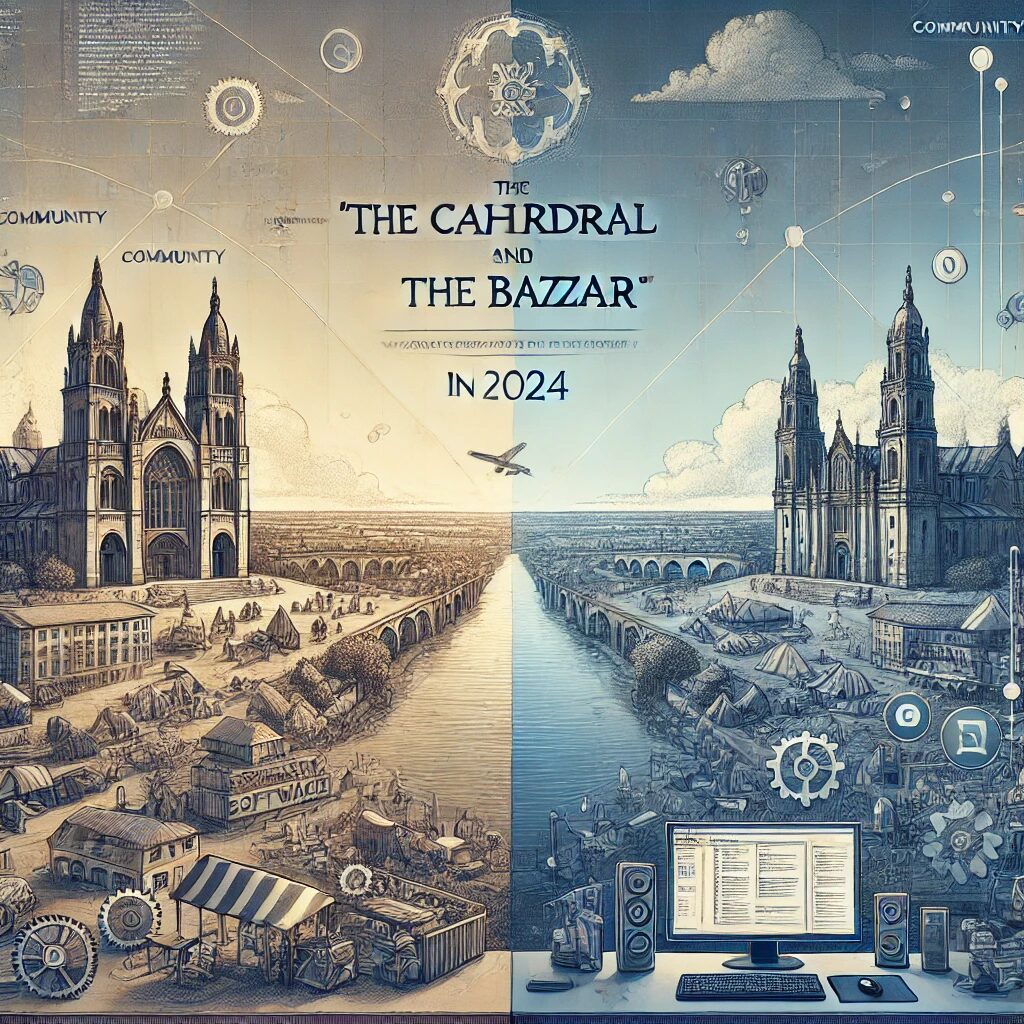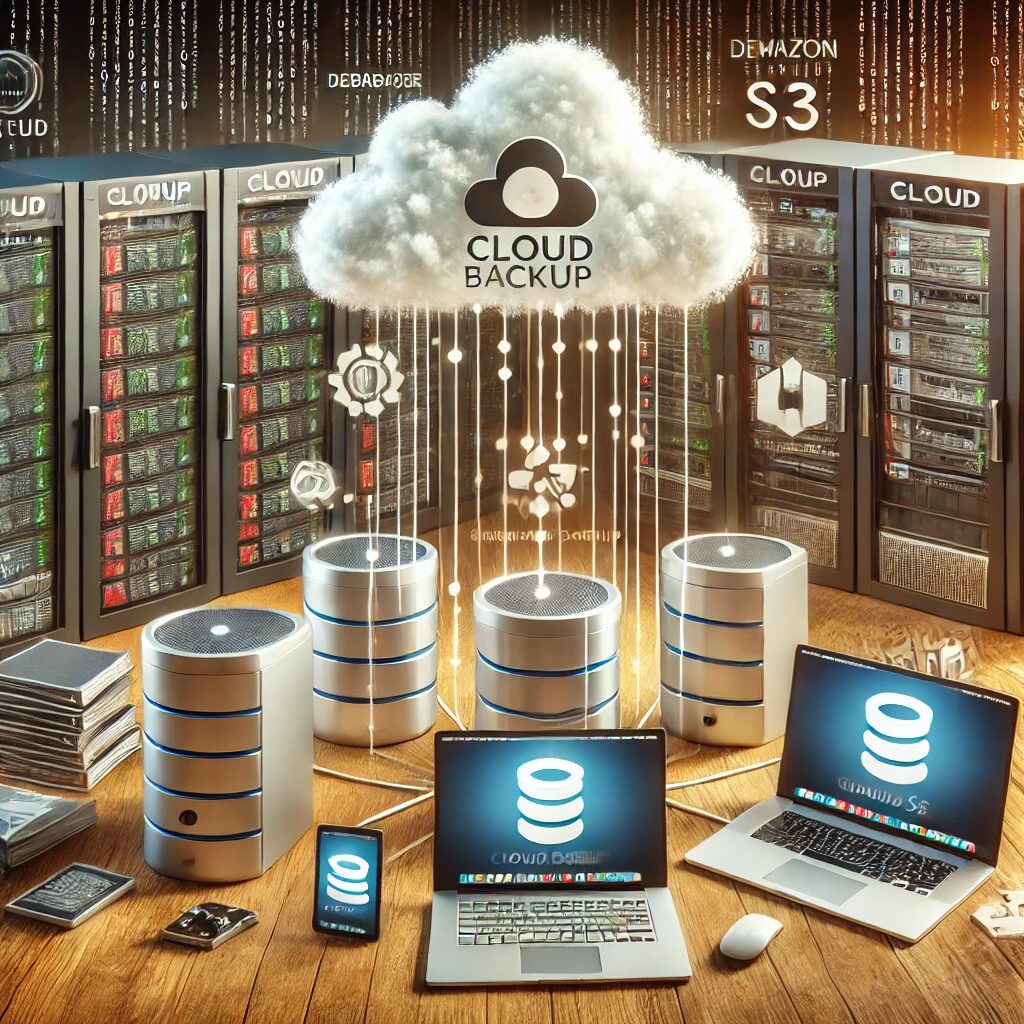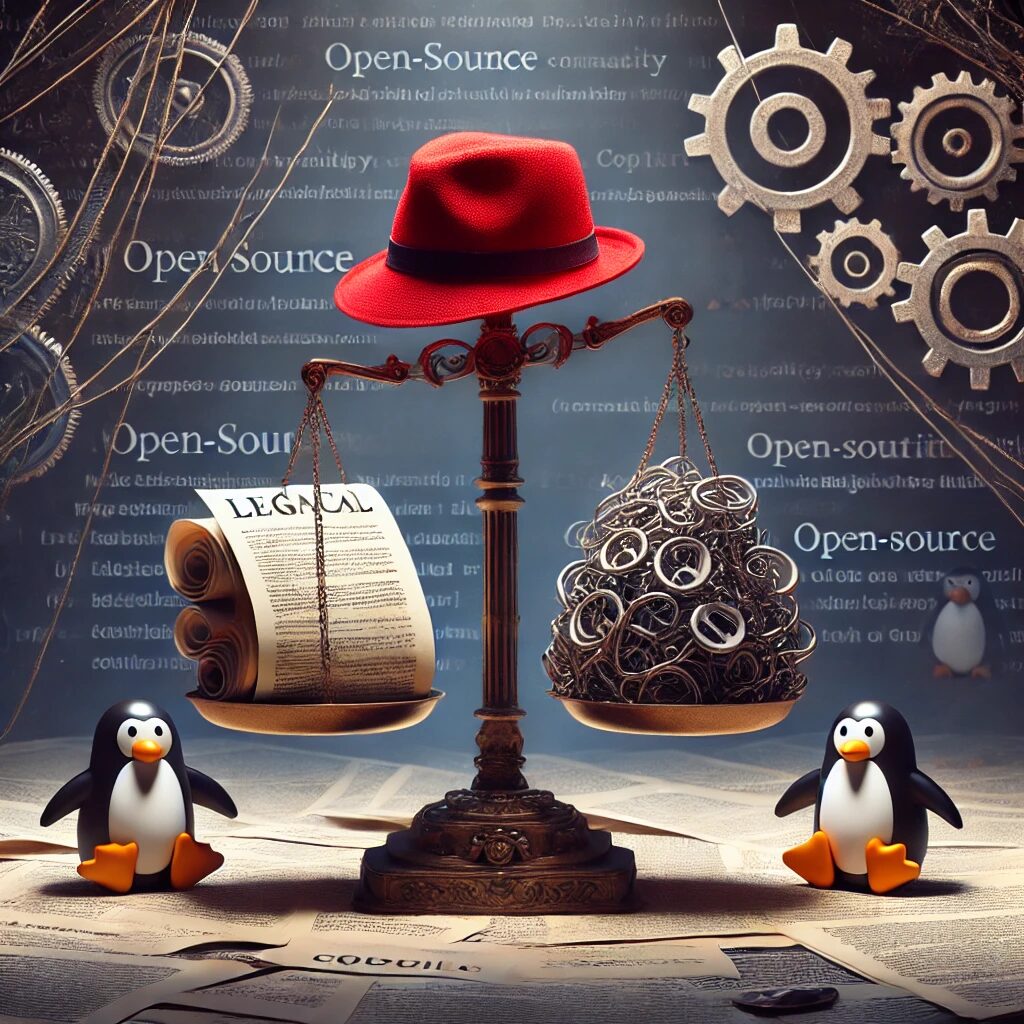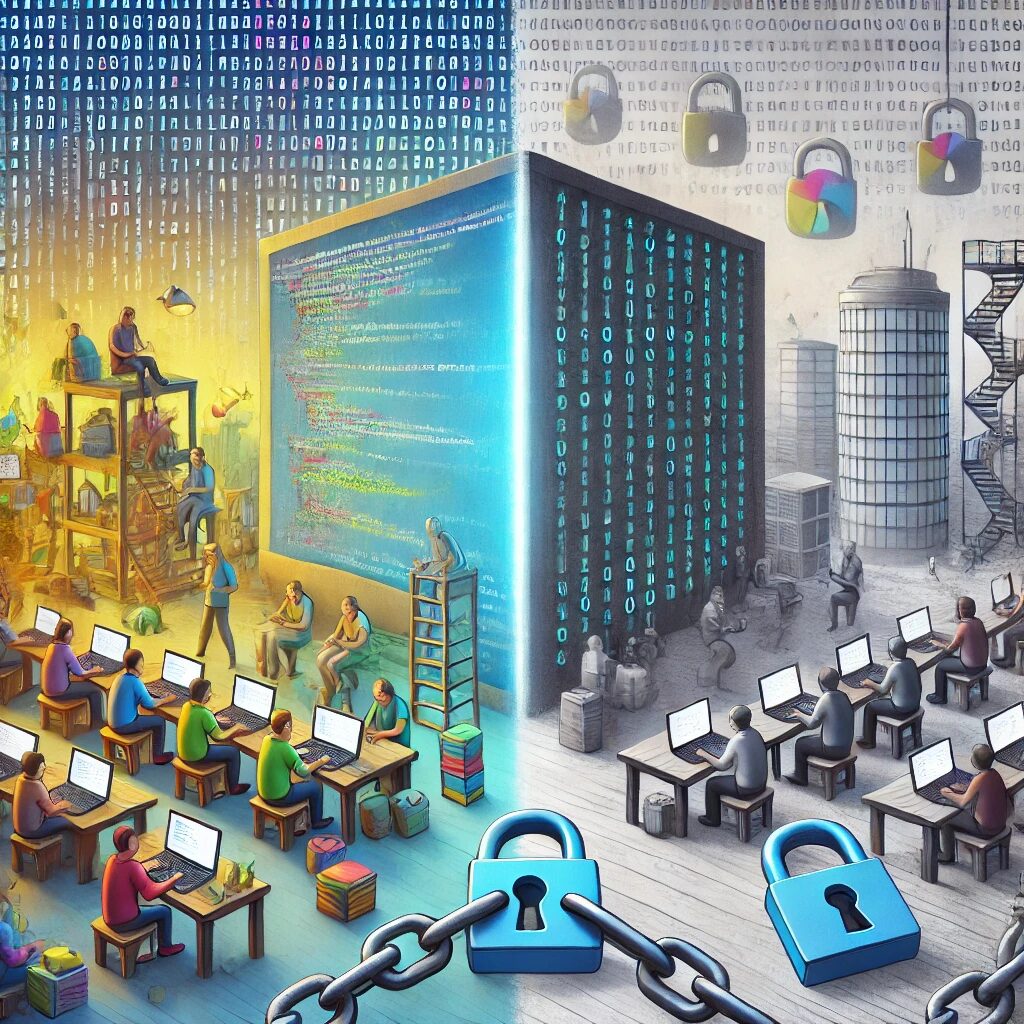In 1997, Eric S. Raymond penned a seminal essay titled “The Cathedral and the Bazaar,” which profoundly influenced the open-source software movement. The essay compared two distinct development models: the “Cathedral” model, characterized by tight control and centralized development, and the “Bazaar” model, typified by decentralized, collaborative, and open processes. Over two decades later, this essay remains a cornerstone in discussions about open-source software. But how well do Raymond’s ideas hold up in the context of 2024’s open-source landscape? Let’s explore.
The Cathedral vs. The Bazaar: A Recap
Raymond’s “Cathedral” model describes a traditional approach to software development where source code is restricted to a select group of developers until a final, polished product is released to the public. In contrast, the “Bazaar” model advocates for an open and collaborative approach where the source code is available to anyone interested from the outset, encouraging contributions and feedback from a broad community of developers.
The State of Open Source in 2024
As we navigate the open-source environment of 2024, it’s evident that the principles Raymond championed in “The Cathedral and the Bazaar” continue to resonate, albeit with new complexities and nuances.
Continued Relevance of the Bazaar Model
- Collaboration and Innovation: The Bazaar model’s emphasis on broad collaboration has proven to be incredibly effective. Projects like Linux, Kubernetes, and TensorFlow have thrived on the contributions of diverse, global communities. This collaborative spirit has driven rapid innovation and adaptation, proving Raymond’s assertion that “given enough eyeballs, all bugs are shallow” (Linus’s Law).
- Open Governance and Transparency: Many successful open-source projects in 2024 embrace open governance models, ensuring that no single entity can dominate decision-making. This approach echoes the decentralized ethos of the Bazaar model, promoting transparency and inclusiveness.
- Corporate Participation: While Raymond could not have fully predicted the extent to which corporations would embrace open source, his principles still apply. Companies like Google, Microsoft, and Red Hat not only contribute to open-source projects but also rely on them for critical infrastructure. This symbiotic relationship underscores the Bazaar model’s value in fostering innovation through shared efforts.
Challenges and Evolution
Despite the enduring relevance of Raymond’s ideas, the open-source landscape in 2024 presents new challenges and developments that complicate the Cathedral-Bazaar dichotomy.
- Security Concerns: The open nature of the Bazaar model, while advantageous for collaboration, also poses significant security risks. High-profile vulnerabilities, such as those found in the Log4j library, highlight the need for robust security practices and oversight within open-source communities. Ensuring that open-source projects remain secure without stifling their collaborative nature is an ongoing challenge.
- Sustainability and Funding: Many open-source projects struggle with sustainability, relying on volunteer contributions and sporadic funding. While large projects often receive corporate backing, smaller projects can find it difficult to secure the resources needed for maintenance and development. This issue raises questions about the long-term viability of the purely Bazaar model without adequate financial support.
- Licensing and Ethical Use: The rise of artificial intelligence and other advanced technologies has sparked debates over the ethical use of open-source software. Developers are increasingly concerned about how their contributions are used, leading to discussions about new licensing models that can enforce ethical constraints. This evolution reflects a more complex landscape than Raymond’s original binary framework.
Conclusion: The Enduring Legacy of “The Cathedral and the Bazaar”
Eric S. Raymond’s “The Cathedral and the Bazaar” remains a foundational text in the world of open-source software, providing insights that are still relevant in 2024. The core principles of transparency, collaboration, and community-driven development continue to drive much of the innovation in the open-source space. However, the modern landscape introduces new challenges that require a nuanced understanding of these principles.
The open-source movement has evolved beyond the simple dichotomy of Cathedral and Bazaar, blending elements of both models to address contemporary issues. As we move forward, the challenge will be to retain the collaborative spirit of the Bazaar while addressing the practical concerns of security, sustainability, and ethical use. Raymond’s work remains a touchstone, guiding the ongoing evolution of open-source software in an increasingly complex world.





